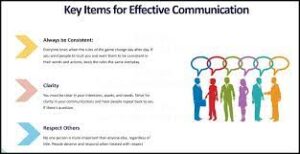Fresh off a summer of relative freedom after harsh lockdowns at the beginning of the pandemic, Europe is trying a new strategy to halt the coronavirus’s next surge: Lockdown Lite.
Unlike the blanket stay-at-home orders that characterized responses to Covid-19’s first wave, a partial lockdown isn’t designed to stop transmission completely. Instead, the idea is to home in on hot spots — certain neighborhoods, nightclubs or private parties, for example — while leaving large parts of the economy open for business.
With death rates running at only a small fraction of the levels last spring despite surging infections in France, Spain, the U.K. and other countries, governments want to avoid draconian measures that caused their worst recessions in memory. Partial and shifting lockdowns are likely to become the norm into next year at least, as countries wait for an immunization that’s effective and broadly accessible.
“We have a lot left to go,” said Michael Osterholm, director of the Center for Infectious Disease Research and Policy at the University of Minnesota. “I don’t think people really fully understand that. We’re still in the middle innings of a baseball game at the best.”
One lesson from the Asia-Pacific region, further along in the pandemic timeline, is that Lockdown Lite works only when paired with a broader strategy of testing and tracing. Europe’s inability to meet surging demand for testing and some countries’ lack of tracing capacity suggest the region could struggle with the new approach.
New Measures
That hasn’t stopped governments from trying. Across western Europe this week, authorities have cracked down on nightlife, restricted gatherings and tightened rules on mask-wearing in public spaces.
In the U.K., Prime Minister Boris Johnson asked residents to work from home for six months if they can and ordered pubs and restaurants to close at 10 p.m.
In France, bars in the Paris region and other cities will be forced to close by 10 p.m., starting Monday, while in the Marseille area, currently one of the most affected, all restaurants and bars will be shuttered, Health Minister Olivier Veran said Wednesday evening. The new restrictions will apply for two weeks.
While the government isn’t currently considering lockdowns, even local ones, Veran said, it will reduce crowd-size limits for public events and has added new restrictions on private gatherings beginning Saturday.
In Spain, Health Minister Salvador Illa urged Madrid residents not to leave home unless they must, even as restaurants outside the worst-affected areas are allowed to stay open until 1:30 a.m.
The goal should be to create a sustainable situation where schools and economies aren’t hobbled by the virus, rather than simply hoping that a vaccine will soon solve the problem, said Robert Schooley, infectious disease specialist at the University of California San Diego.
“We really have to get on with it, about how to operate in the Covid era where the virus is kind of going to be looking over our shoulder for a while to come,” Schooley said.
Testing, Tracing
If the progression of the pandemic in the Asia-Pacific region is any precedent, targeted measures can work if they’re combined with rigorous testing and tracing, and if local populations follow them. Facing flare-ups from late June through August that were sometimes higher than the initial spread of contagion, countries initially refrained from blanket orders.
After an outbreak in Beijing in June, China abandoned its previous strategy of confining millions of people to their homes. Instead, the government shut schools, ordered more than 11 million tests and told residents in high-risk housing compounds to stay home, while leaving a majority of the city’s more than 20 million people free to move around.
The targeted approach reaches its limits in places where infections of unknown origins grow to account for a high percentage of new cases. That’s when contact-tracing breaks down, leaving officials unsure where asymptomatic virus cases could be lurking. In Australia and Hong Kong, that led authorities to turn again to across-the-board lockdowns to slow the virus’s advance.
Australia’s second-largest city, Melbourne, first tried to lock down only the public housing blocks that were hot spots of infection. But as unlinked cases kept emerging, the government closed down the city of 5 million people from July until September.
Hong Kong, which saw its worst outbreak erupt in July, couldn’t fully lock down because tiny apartments leave some families without their own kitchens or bathrooms. Instead, the Asian financial hub limited restaurant dining hours, banned public gatherings of more than two people and mandated masks even when exercising outdoors. It adapted measures every seven days to calibrate the blow to the wounded economy.
Alternating Weeks
European authorities could try something similar, alternating two weeks of strict lockdown with four weeks of “less rigid” steps, according to David Salisbury, an associate fellow at the global health program at Chatham House, the London-based think tank.
“It’s a possible interim approach that never lets transmission really take off,” Salisbury said. “You don’t have to have a total shutdown.”
In its patchwork response to the new flare-up, Europe now looks more like the U.S., where targeted lockdowns have been imposed on college campuses and other infection clusters even as reopening proceeds elsewhere.
Lockdown Lite has shown some success in Europe. In Italy, authorities closed nightclubs at the first signs of another wave of infections in August — and have managed to avoid the same degree of resurgence as in France or Spain. Germany has imposed local restrictions on areas with high case numbers.
Yet the new measures have also created confusion over government flip-flops — such as the U.K.’s abandonment of a drive to get workers to return to offices — as well as some grumbling about mixed messages.
In Munich on Wednesday, with Oktoberfest canceled and a five-person limit on gatherings set to go into place the following day, a trio of tour guides in front of the neo-Gothic city hall wondered how long they’d be able to scrape together even a handful of sightseers. “The rules are really inconsistent,” said Brett Gooden, one of the guides. “It’s hard for the public to adjust.”
–With assistance from Marco Bertacche, Rudy Ruitenberg, Thomas Gualtieri, James Paton, Tim Loh, Zoe Schneeweiss and Francois de Beaupuy.
More must-read international coverage from Fortune:
- Scientists say a gap in COVID vaccine research may keep us from returning to “normal”
- There’s an ulterior motive to China’s carbon neutral pledge: Cornering the green tech market
- How data helped keep Red Bull’s F1 team on track during the pandemic
- Check out Airbus’s concepts for the world’s first “zero-emission commercial aircraft”
- Researchers find a “druggable pocket” in coronavirus that could lead to new antivirals




